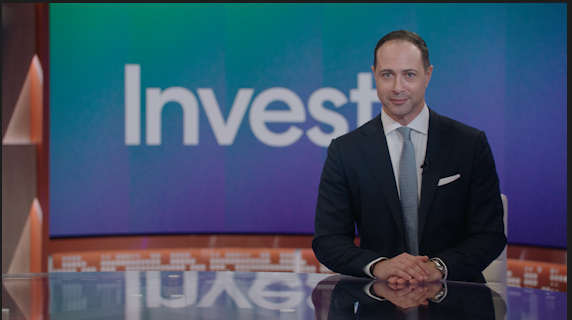Editorial Note: We earn a commission from partner links on Forbes Advisor. Commissions do not affect our editors’ opinions or evaluations.
A little more than six months into President Donald Trump’s second term, key policies—including the sweeping One Big Beautiful Bill Act—are reshaping how Americans earn, spend, save and invest.
From new tax breaks to tariffs, the economic landscape is shifting fast. Whether you’re watching prices, planning a move or building wealth, here’s what’s changing, how consumers are feeling about the economy and how to make smart financial decisions in the changing economic landscape.
Polls Show Americans Losing Confidence in Economy
Recent polls show President Trump’s job approval rating remains below 50% in the early months of his second term. In six national surveys conducted between June and July 2025, Trump’s approval ranged from 38% to 45%.
At the same time, consumer confidence in the economy is low, with more than half of Americans in all six polls disapproving of the current state of the economy.
Economy Approval Rating According to Six Polls
But what do these numbers mean for your daily life, paycheck, grocery bills or savings account?
We break down how current policies are shaping the financial picture for everyday Americans and what steps you can take now to protect your money.
The Cost of Living: Tariffs, Jobs and Prices
The good: Since January 2025, the U.S. unemployment rate has ticked up slightly from 4% to 4.1%, remaining historically low despite signs of a cooling labor market. While adult unemployment has remained relatively stable across genders and racial groups, teen unemployment experienced the sharpest rise, increasing from 11.8% to 14.4%. (Both stats are according to the Bureau of Labor Statistics.)
The challenge: New tariffs on foreign goods are driving up prices on essentials like electronics, cars and even some groceries. However, the increase is still minimal on average, with some product pricing rising faster than others, such as large appliances. This eats into budgets, especially for families already stretched thin.
Beyond higher prices, some companies are now diverting staff and resources to navigate tariff rules and shifting focus away from innovation and production.
That shift can slow growth and raise the risk of recession as both supply and consumer demand take a hit.
What you can do to stretch your dollar amid rising prices:
- Delay large purchases or consider secondhand alternatives.
- Use cash-back credit cards to earn money on purchases, helping offset the rising cost of goods. Pay the card balance in full each month to avoid erasing savings with interest charges.
- Stack loyalty programs with store credit cards to maximize savings. Using a store’s free membership alongside a rewards credit card can combine discounts, cash back and exclusive offers.
Are Trump’s Tax Breaks Help or Hype?
The Trump Administration’s One Big Beautiful Bill Act introduced a $6,000 tax deduction for seniors and a $1,000 child bonus for families.
The good: These benefits could ease pressure for retirees on fixed incomes and help working parents offset rising child care and education costs.
The catch: Not everyone will see the same impact.
“The new senior and child tax breaks do not help low and middle-income families, mostly because not only do they need to be seniors or have children, they also need to be aware of how to claim those breaks. The benefit is to high earners who know how to take advantage of these new tax breaks,” says Mayra Rodríguez Valladares, managing principal at financial consulting company MRV Associates.
Taxpayers must claim the deductions on their federal return, which could limit access for lower-income families without professional tax help.
That concern is echoed by the nonpartisan Center on Budget and Policy Priorities (CBPP), which points out that the bill also includes more than $1 trillion in Medicaid cuts over the next decade. If states can’t cover the gap, millions of low-income adults could lose coverage, which could cancel out the value of the new deductions for some families.
What to do: If you do qualify for tax breaks and end up receiving a tax refund, consider using it to build financial stability.
- First, pay off any high-interest debt. Credit cards often come with interest rates of 20% or more and can quickly drain your budget. If possible, transfer high-interest debt to a card with a 0% APR. This can help you eliminate interest immediately.
- Use tax software to claim every deduction. If you can’t afford a certified public accountant, there are many reputable tax programs that walk you through deductions like the senior tax break or child bonus. They help flag credits you might otherwise miss. This is especially useful for first-time filers or part-time workers.
- High-yield savings accounts currently earn around 5.8% APY, as of July 28, the time of this writing. At 5.8% APY with monthly compounding, $1,000 could grow to about $1,783 in 10 years, $2,381 in 15 years and $3,181 in 20 years through compound interest, more than tripling your initial investment.
- Certificates of deposit may offer similarly high rates, around 4.5%, but require you to lock in your money for a set period of time.
Stock Market Gains Have Helped Many—But Not Everyone
Since Trump’s second term began in January 2025, the stock market has rebounded from early-year volatility to reach new highs. After a dip in the spring tied to tariff concerns, the S&P 500 climbed steadily and hit a record in July.
Still, with about 62% of Americans owning stocks—according to a 2025 Gallup poll—many households haven’t benefited, especially those relying on cash savings, which continue to lose value to inflation.
The divide: Households with investments, such as 401(k)s, IRAs or brokerage accounts, have likely experienced growth this year, providing them with a more substantial financial cushion and increased options. But for those without market exposure, inflation continues to erode savings, especially in low-interest accounts.
Even among those with investments, many near retirement are still at risk.
According to a 2022 Employee Benefit Research Institute report, 32% of people nearing retirement have their 401(k) savings in target date funds, diversified portfolios that automatically reduce risk as you get older. That leaves many older Americans more vulnerable to market swings, especially in today’s tariff-fueled economy.
What to do:
- If you’re invested: Consider rebalancing your portfolio to lock in gains and protect against volatility. If you’re approaching retirement, check whether your 401(k) plan offers a target-date fund or other risk-adjusted options.
- If you’re not yet invested: Start small.
- Invest in a diversified ETF or index fund. If you’re new to investing, a low-cost index fund offers broad exposure without requiring you to pick individual stocks.
- Open a Roth IRA, which allows your money to grow tax-free, and you can withdraw contributions at any time without penalty—ideal for long-term savers.
- Use a robo-advisor. Automated investment platforms tailor portfolios to your specific goals and risk tolerance, making it easier to get started with investing.
Inflation, Fed Pressure and Your Budget
Prices remain sticky in 2025. While inflation isn’t spiking, it’s not dropping much either. This is keeping pressure on everyday budgets. The Federal Reserve has held rates steady so far this year, resisting calls to cut.
The good: Wages have grown faster than inflation over the past year, but that doesn’t mean everyone feels richer. According to the Bureau of Labor Statistics, median weekly earnings for full-time workers rose 3.9% between Q2 2024 and Q2 2025. Over the same period, inflation increased 2.7%, meaning workers saw a small gain in real purchasing power.
But gains were uneven.. From May to June, real average weekly earnings ticked down by 0.4% as the average workweek shortened from 34.3 to 34.2 hours. That means some workers took home less overall, even if hourly pay stayed flat.
Meanwhile, the cost of essentials—rent, groceries, health insurance—remains stubbornly high. For many households, that small gain in earnings hasn’t been enough to keep up with the bills.
What to do:


